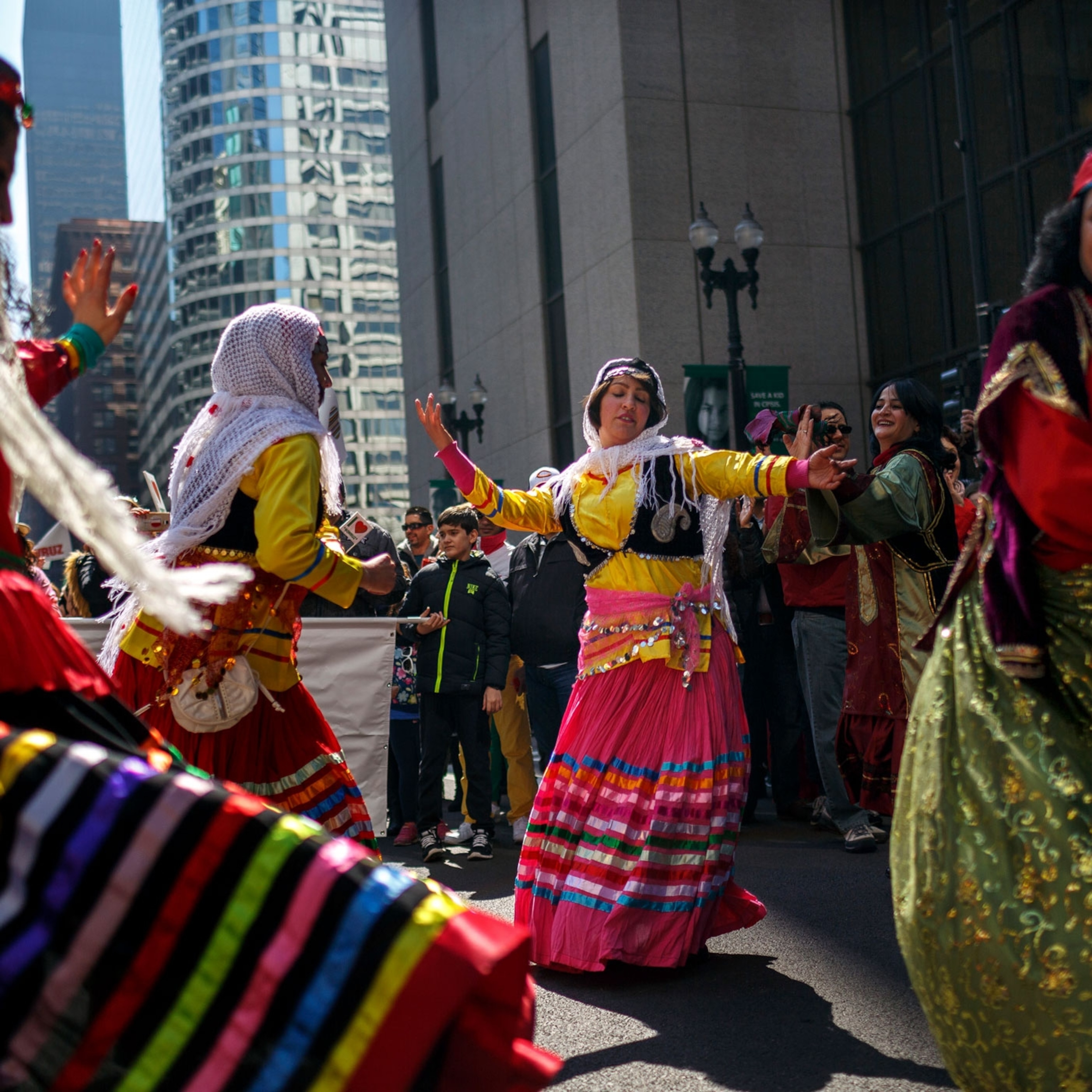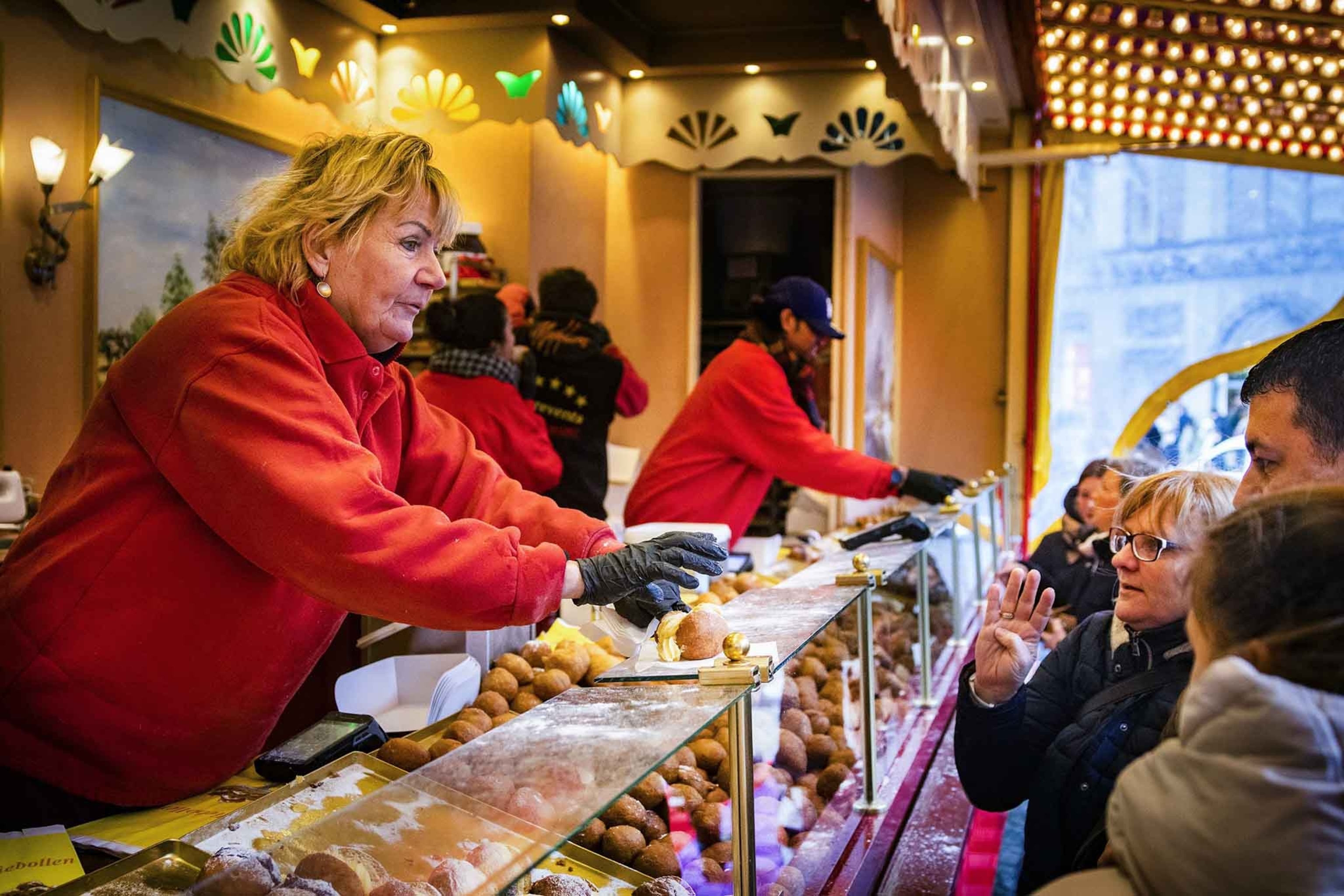
7 New Year's food traditions that will bring good luck
From a donut that protects against witches to a pastry that will tell your fortune, cultures around the world often start the new year with great food.
For millennia, humans around the world have celebrated the new year hoping it brings health, wealth, and success. More often than not, these festivities revolve around some symbolic food—like long noodles for a long life, twelve grapes for twelve lucky months, and collard greens for money.
Champagne aside, new year’s fare tends to be fairly mundane and inexpensive. Take lentils in Brazil, for instance, or black eyed peas in the American South. “The simplicity of the food speaks to the universality of the holiday,” says Amy Bentley, a professor of nutrition and food studies at New York University.
With 2025 fast approaching, chefs and culinary historians share the stories behind some of the lesser known New Year’s food traditions from around the globe.
Oliebollen in the Netherlands

New Year’s in the Netherlands would be incomplete—and if legend holds, dangerous—without oliebollen. The Dutch donut, whose name literally translates to oil ball, is eaten all year round but is said to have protective powers during the new year.
Stories say the pagan goddess Perchta, also known as the “Christmas witch,” flies through the winter night sky slicing open people’s stomachs in search of food. Oliebollen is the only way to thwart her—according to legend, the grease from the deep-fried dough would cause her sword to slide off their bellies.
Typically seasoned with cinnamon, cloves, and ginger, oliebollen are often filled with dried berries, chopped apples, and whole almonds, according to culinary historian and author Peter Rose. Rose notes that their popularity in the winter months may be due, in part, to the greater availability of fat for frying after slaughter time, which traditionally took place in November.
Soup joumou in Haiti

Haiti’s national dish is a beloved, squash-based soup served annually on January 1, a momentous day in the Caribbean nation for more than one reason.
The dish originated as a celebration of Haitian liberation from France. Under colonial rule, enslaved Africans were forced to cultivate squash and prepare the soup for their French masters—but they were forbidden from partaking in its consumption. When Haiti declared its independence on January 1, 1804, it’s believed that Marie Claire Heureuse Félicité Bonheur Dessalines—the wife of a key revolutionary—distributed soup joumou to all the newly freed Haitians.
“It’s, in many ways, a sign of defiance,” as well as a symbol of change and communion, says Haitian-born filmmaker Dudley Alexis.
Alexis, who directed a documentary about the history of soup joumou, says it’s his “favorite tradition of Haiti.” While the recipe varies by family, most include beef, potatoes, noodles, and some vegetables, along with squash and spices. Preparation typically begins the night before, on December 31, and is often a communal family activity, he says. “There’s an element of sharing,” he adds, remembering exchanging bowls of soup with neighbors. But at the end of the day, “everybody’s gonna tell you their mother has the best soup.”
Banitsa in Bulgaria
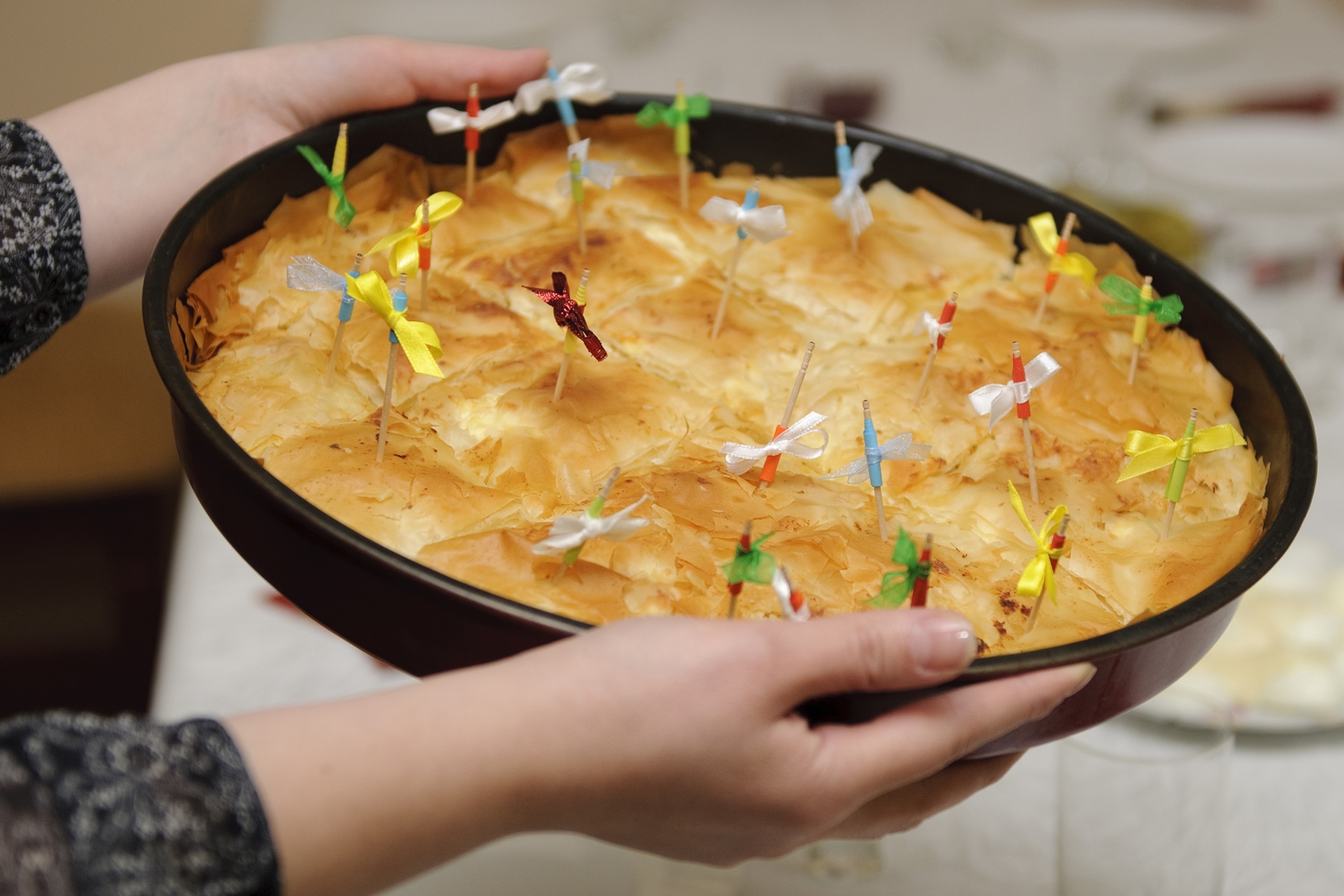
At the center of New Year’s festivities in Bulgaria is a festive, savory filo pastry called banitsa. “There are few things as enticing as the smell of freshly baked banitsa,” says Macedonia-born writer and recipe developer Irina Janakievska. Between layers of flaky dough is a mixture of eggs, natural yogurt, and belo salamureno sirene (or white brined cheese). While also eaten as an everyday breakfast, the celebratory version is something special.
On New Year’s, banitsa is typically filled with symbolic tokens and good luck messages, according to Janakievska, author of The Balkan Kitchen. Some families hide silver coins that are meant to bring luck to whoever finds them, while others decorate the pastry with twigs, wrapped in slips of paper containing handwritten fortunes. “Each person takes a slice, and the note they find is believed to foretell their fortune for the year ahead,” she says.
Rice cakes in the Philippines
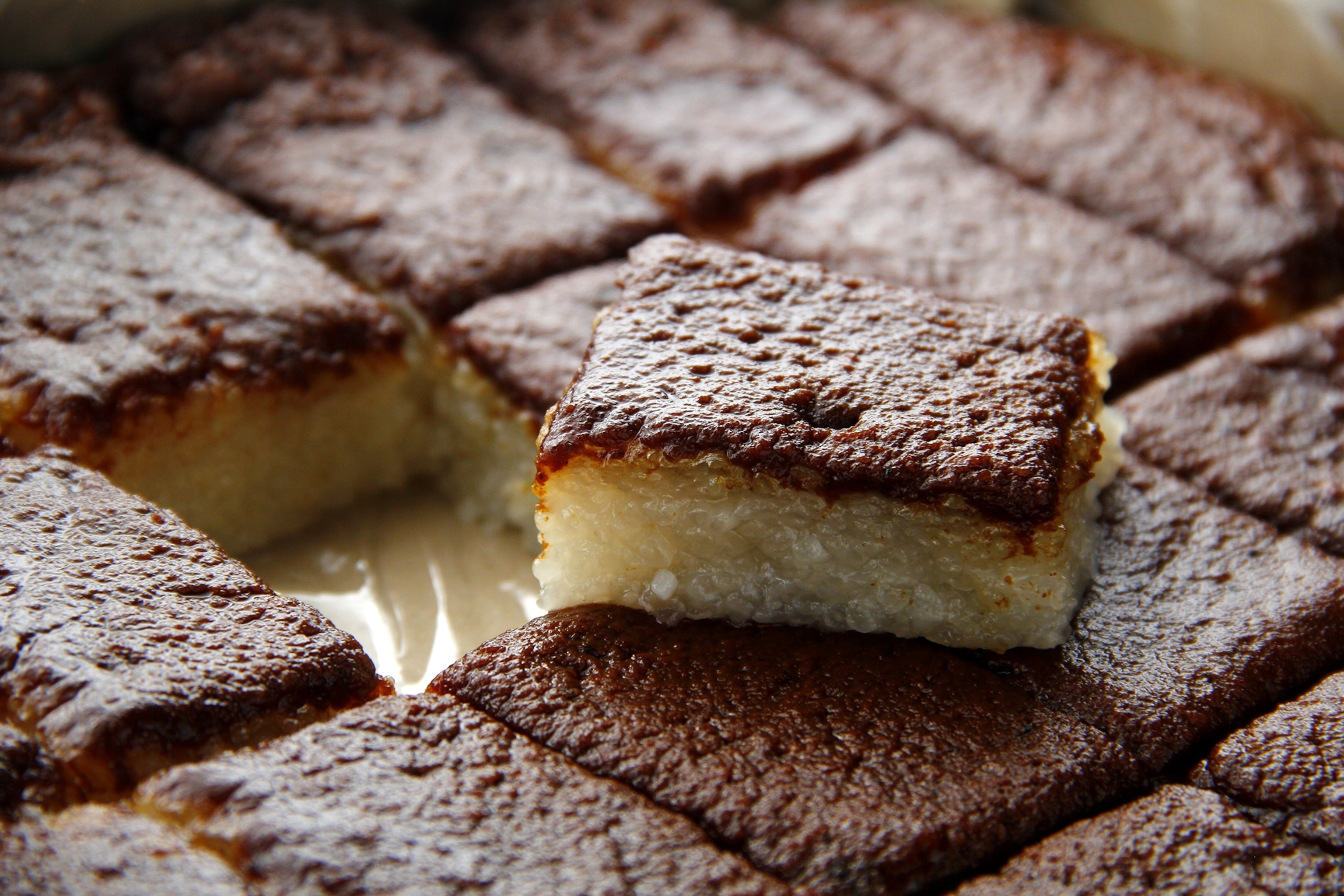
Filipino New Year’s celebrations typically involve an elaborate spread of dishes with symbolic—even superstitious—significance.
Take kakanin, for instance, the Tagalog word for a variety of sticky rice cakes. These celebratory delicacies include savory varieties, like puto (steamed rice cake typically served with soup or stew) and bibingka (rice cake baked in banana leaves, often topped with eggs and cheese), as well as sweet treats, like biko (rice cake made with coconut milk and brown sugar) and tikoy (a steamed, sweet rice cake eaten at the end of the meal). Sticky and glutinous, these dishes are meant to symbolize the fortification of family bonds and serve as a magnet for good fortune in the new year.
The centering of rice during New Year’s (and other holidays) dates back to pre-colonial Philippines, according to Yana Gilbuena-Babu is a Filipina chef and writer. Before Spanish colonization, rice was “so hard to grow that it was only served during very special occasions,” she says.
“My grandma always made sure that it showed abundance because that’s something you wanted to channel,” she says.
Today, the wide variety of rice-based dishes is also a cultural fusion. From tikoy and biko, which came from China, to puto, which is believed to be of Tamil origin, “the New Year’s table is really a reflection of all the influences we have.”
Moose Milk in Canada
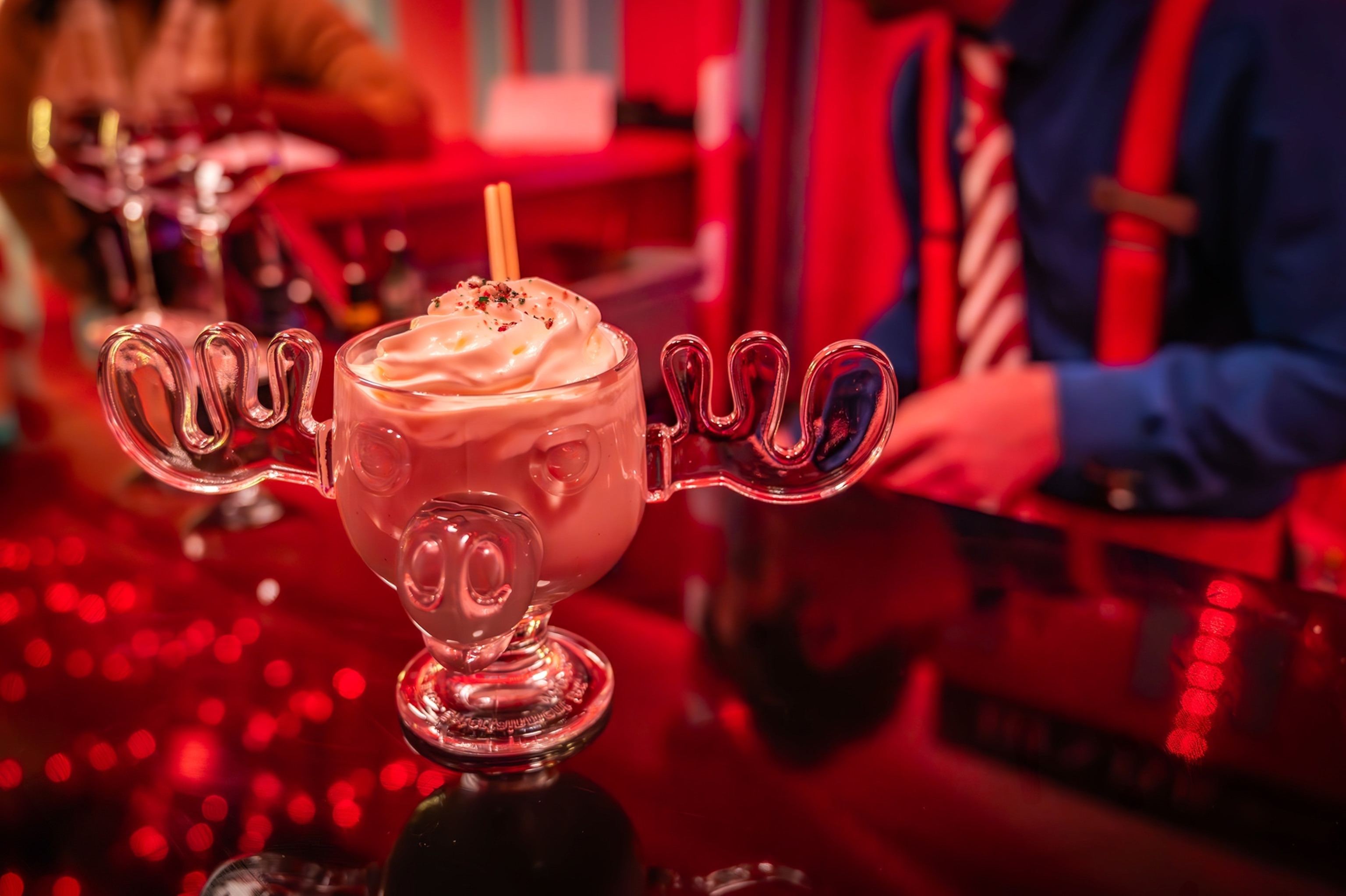
What do you get when you combine eggnog, an ice cream float, and a ton of alcohol? Moose Milk, of course. The festive Canadian cocktail, known for being deliciously smooth and dangerously boozy, is a favorite holiday libation within the military milieu, according to Michael Boire, a retired army officer and history professor at the Royal Military College of Canada.
The drink is typically made from a deadly combination of milk, buttermilk, spices, rum, and ice cream. As Boire says, the libation “can lead to uproarious wonderful parties or some bad scenes.”
Moose Milk has been a mainstay at military social events, including levées—official New Year’s day receptions bringing together government and military officials with members of the public. Though the absolute origins are hard to track, the first references to Moose Milk date back to before the first World War, according to Boire.
“A great big pot of moose milk will keep a reception going,” he says. “It's dramatic to see how quick the dancing begins.”
Kamaboko in Japan

In Japan, an entire category of food is dedicated to the new year. Osechi-ryōri, which originated more than 1,000 years ago during the Heian period, are traditionally served in lacquer boxes, according to Samuel Yamashita, historian and Asian studies scholar at Pomona College.
Among the colorful assortment of foods packed into these boxes is a delicate red and white fish cake called kamaboko. The domed shape, with the layer of red overlaid on white, resembles a rising sun and is meant to symbolize good luck for the new year.
Kamaboko is often served in o-zōni, a soy or miso-based soup filled with mochi and vegetables. “It's normally the first thing that Japanese people eat for the new year,” says Jessica Kim, a first-generation Japanese American and the owner of her family restaurant, Harumi Sushi, in Phoenix, Arizona.
Traditional foods in Latin America

From Cuban lechón asado to Mexican tamales, pork has an important place on the New Year’s table in Latin America, according to Sandra Gutierrez, a food journalist, cookbook author, and expert on Latin American cuisine.
She explains replacing goat with—the more abundant and less expensive—pork is a Latin American adaptation of the “tradition of roasting a whole animal to celebrate festivities,” which she says dates back centuries to the Middle East. Pork is a symbol of prosperity, a belief she says comes from the Chinese, who settled across the Latin territories beginning in the late 19th century.
New Year’s traditions involving legumes like lentils and beans are widespread in Latin America, according to Gutierrez. Lentils, because of their resemblance to gold coins, are popular symbols of wealth in Brazil, Chile, and Venezuela, where people typically eat a spoonful (or more) of lentils at midnight. In Colombia, it’s traditional to carry uncooked lentils in your pocket on the last day of the year. Not all food-related traditions are edible, however. Cubans, Brazilians, and Mexicans often use little bags of dried lentils as decoration or gifts, to wish each other good fortune in the coming year.
In Brazil, pomegranate seeds also symbolize coins, Gutierrez says. It’s common for Brazilians to eat the fruit, or “even keep a few of the seeds in their wallets throughout the year, as a means to attract wealth.”

